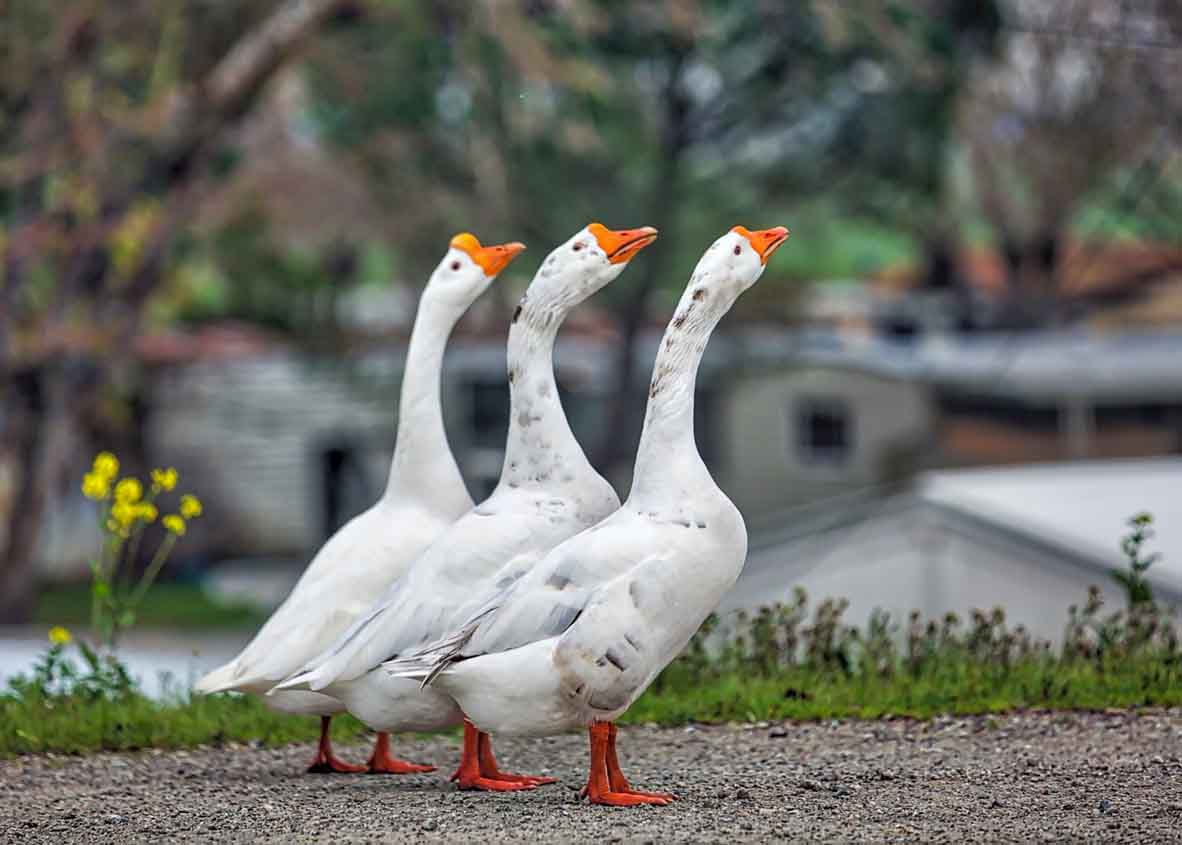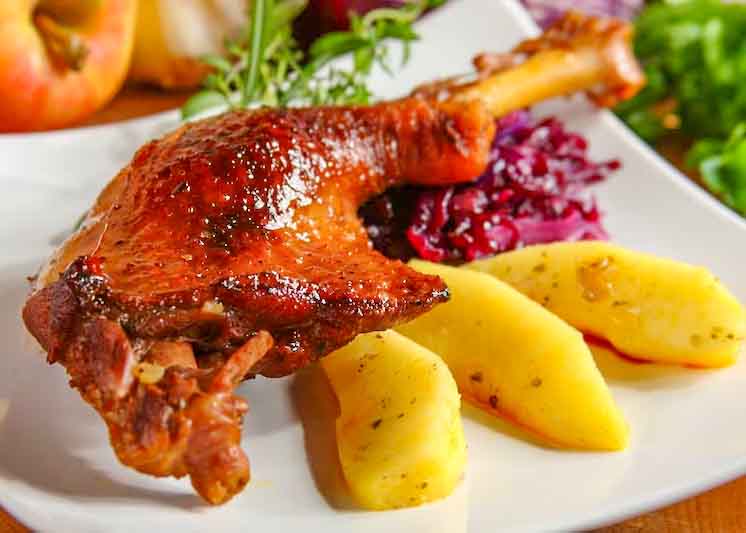November 11th has its own unique sound in Polish cuisine—that of a crispy, crunchy skin—and the aroma of marjoram, apples, and red cabbage. "Goose is best on St. Martin's Day," goes the folk saying. But where did this custom, which is returning to our tables with such fervor, come from? Below, we examine its origins—from hagiographic legend, through the rhythm of the old economic year and the pre-Advent fast, to the contemporary revival of goose in Poland.
From honking to… goose: the legend of St. Martin
The most popular story has it that St. Martin of Tours—a modest man averse to honors—wanting to avoid election as bishop, hid in a cell with geese. The birds betrayed him with their honking, and he was elected bishop after all. From then on, the goose accompanied the November feast of St. Martin in various European countries, from France to Germany and the Low Countries. Versions of this story are recounted in both contemporary popular works and encyclopedia entries about the saint.

Source: publicdomainpictures.net
It's worth adding that already in the early Middle Ages, St. Martin's Eve and Day constituted the last moment before the period of sacrifice that preceded Christmas (the old "St. Martin's Fast," the prototype of Advent). Goose feasts were therefore a symbolic culmination of autumn's abundance.
Why November? The rhythm of the old year and economic wisdom
The tradition of St. Martin's feasts overlaps with the cycle of rural work: after the harvest and harvesting, it was time for the November slaughter of waterfowl. Geese during this period—after being naturally fattened on oats and feeding on stubble fields—attained their best flavor.
Polish museums and ethnographic studies also remind us that November 11 was the day of St. Martin's feasts in many regions: geese were roasted, croissants and mulled drinks were served, and food was shared with the poor — because Martin is the saint of mercy.
Goose in old Polish cuisine
In Poland, goose is not a whim of modern "foodies." It was present on tables as early as the old Polish kingdom era—it is mentioned, for example, in the "Compendium Ferculorum" (1682), the oldest Polish cookbook. This is testimony to the long, noble culinary history of goose meat in Poland.

Goose stewed with apples (Source: Przepisy.pl)
Poznań and... croissant instead of goose
In the context of November 11th, it's also worth mentioning the Poznań St. Martin's croissant—a baked good with poppy seeds. It's a parallel, living tradition of November 11th, protected by the EU (PGI). It doesn't compete with the goose—together, they contribute to the richness of Polish St. Martin's Day celebrations.

Poznań St. Martin's croissant (Source: Wikipedia)
Although this is a different branch of tradition, it shares the same saint and the same date. It is an example of how regional customs intertwine with the European cult of St. Martin.
The Renaissance of Goose: From Slow Food to "Time for Goose"
After years of oblivion, goose is making a comeback on Polish tables thanks to promotional campaigns and regional initiatives. Slow Food Polska has been organizing a nationwide campaign "Goose for St. Martin's Day", in which restaurants serve original goose menus. At the same time, the Kujawsko-Pomorskie region is consistently building the region's brand as the land of the best goose, including through fairs and culinary demonstrations.
How they used to eat goose on St. Martin's Day (and how to eat it today)
Classic flavor sets:
- goose baked with apples and marjoram, served with red cabbage or red cabbage with cloves;
- half goose - a smoked delicacy made from goose breast (popular especially in Pomerania);
- seasoned goose liver, pâtés, blood soup - in many homes, these are permanent items on the November menu.
Practical tips:
- choose a young oat-based goose (seasonality and natural fattening translate into taste and nutritional value);
- roast at a lower temperature (approx. 150–160°C/302–320°F) for a longer time, collecting the rendered lard — it's a separate kitchen treasure;
- resting the meat after roasting is the key to juiciness;
- don't waste it: use the carcass for broth, the fat for confit or with sauerkraut.
A living tradition because… it makes sense
The history of the St. Martin's Day goose is a perfect overlap of three orders:
- legends of the saint (symbolism and the story from Tours)
- liturgical calendar (the last feast before Lent/Advent)
- logic of the ancient economy (November is the peak of the goose's form)
No wonder the custom has survived for centuries and today is gaining new life – in line with the spirit of “local & seasonal”.
Is goose a "heavy" meat?
Intuitively, it might seem that goose, being a poultry meat with a thick layer of fat, should be "fatty" in the negative sense. However, its fat has a completely different chemical composition than, for example, beef or pork fat. Goose is a meat full of protein, but also has a high content of unsaturated fatty acids.
Goose fat that is rendered during roasting (so-called goose lard) contains approximately 55–60% unsaturated fatty acids, mainly:
- oleic acid (omega-9) – the same that dominates in olive oil
- linoleic acid (omega-6) – present in vegetable oils
- in smaller amounts alpha-linolenic acid (omega-3)
For comparison:
- pork fat has only about 40–45% of unsaturated acids
- beef fat – even less (30–35%).
Goose meat tradition
Goose on St. Martin's Day is not only a Polish tradition, but appears in many European countries (including Germany, France, the Benelux countries, Austria, Scandinavia), but Polish regional variants — from Pomerania to Kuyavia — give it a unique character.
The tradition of eating goose on St. Martin's Day is more than a culinary curiosity. It's a story about the ancient rhythm of life, about gratitude for the harvest, and about celebrating the end of the agricultural year together. At a time when we increasingly yearn for the authenticity and taste of the past, the November goose becomes a symbol of returning to our roots—to a cuisine with meaning, history, and soul.









